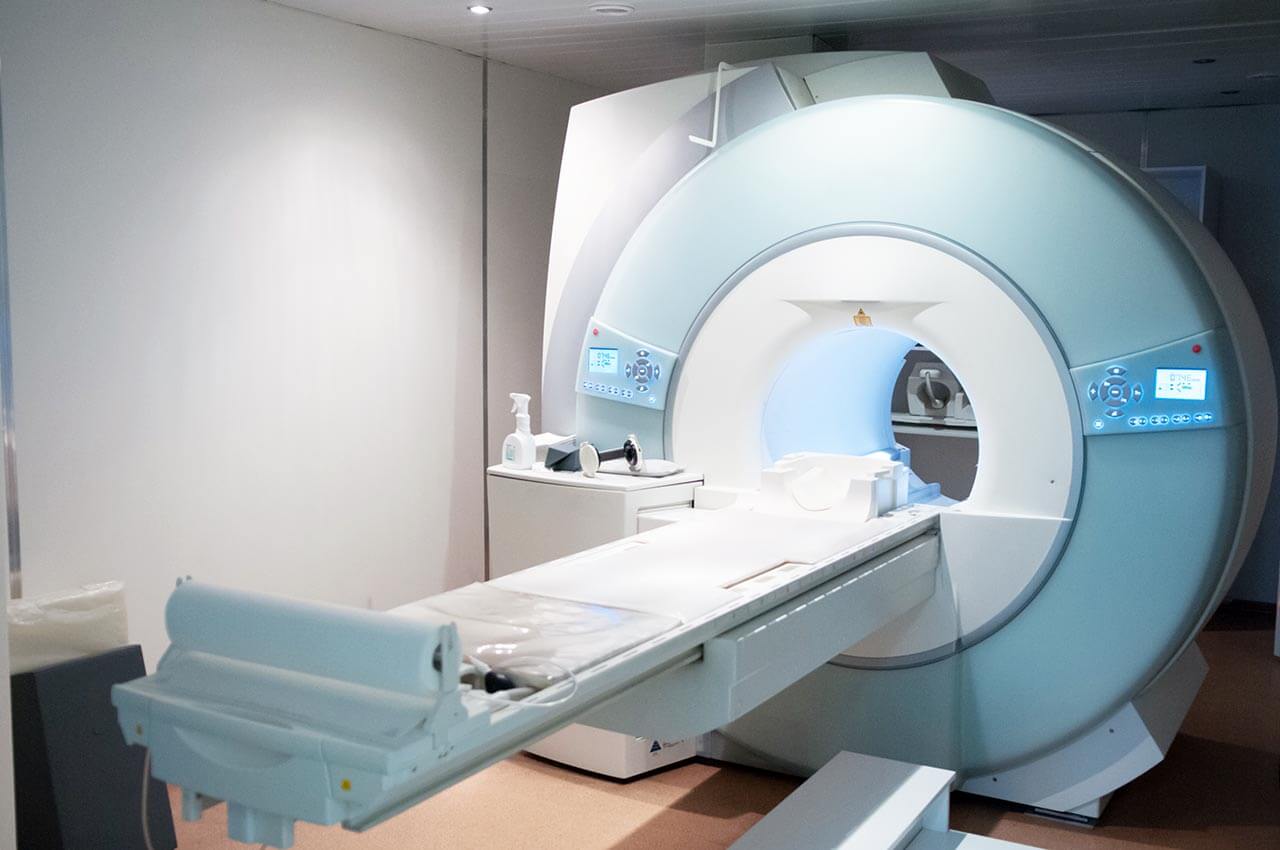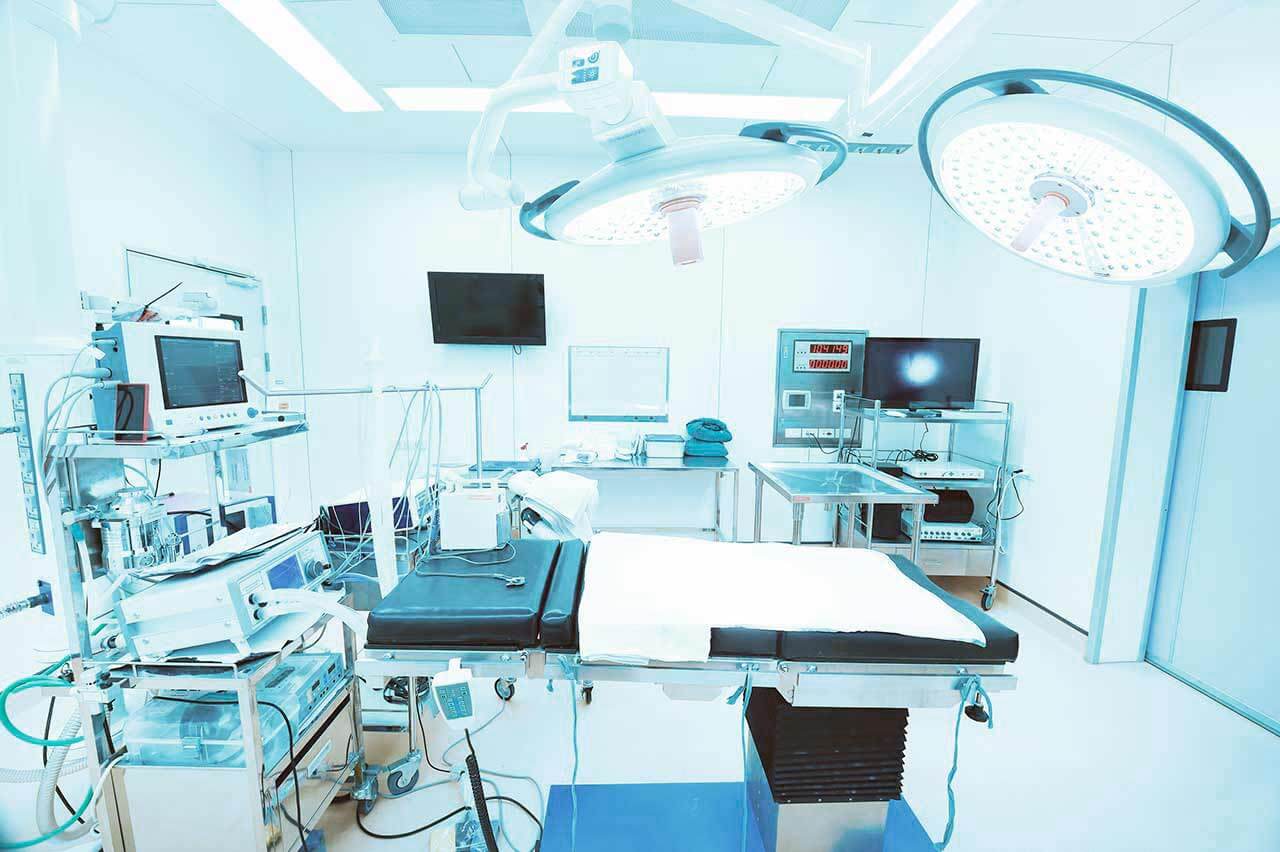
The program includes:
- Initial presentation in the hospital
- Clinical history taking
- Review of available medical records
- Physical examination
- Laboratory tests:
- Complete blood count
- General urine analysis
- Biochemical analysis of blood
- Tumor markers
- Inflammation indicators (CRP, ESR)
- Coagulogram
- Ultrasound scan
- CT scan / MRI
- Preoperative care
- Embolization or chemoembolization, 2 procedures
- Symptomatic treatment
- Cost of essential medicines
- Nursing services
- Elaboration of further recommendations
How program is carried out
During the first visit, the doctor will conduct a clinical examination and go through the results of the available diagnostic tests. After that, you will undergo the necessary additional examination, such as the assessment of liver and kidney function, ultrasound scan, CT scan and MRI. This will allow the doctor to determine which vessels are feeding the tumor and its metastases, as well as determine how well you will tolerate the procedure.
Chemoembolization begins with local anesthesia and catheterization of the femoral artery. The thin catheter is inserted through a few centimeters long incision of the blood vessel. The doctor gradually moves the catheter to the vessel feeding the primary tumor or its metastases. The procedure is carried out under visual control, an angiographic device is used for this. The vascular bed and the position of the catheter in it are displayed on the screen of the angiograph.
When the catheter reaches a suspected artery, a contrast agent is injected through it. Due to the introduction of the contrast agent, the doctor clearly sees the smallest vessels of the tumor and the surrounding healthy tissues on the screen of the angiograph. After that, he injects emboli into the tumor vessels through the same catheter.
Emboli are the spirals or the liquid microspheres. The type of embolus is selected individually, taking into account the diameter of the target vessel. When carrying out chemoembolization, a solution of a chemotherapy drug is additionally injected into the tumor vessel. Due to the subsequent closure of the vessel lumen with an embolus, the chemotherapy drug influences the tumor for a long time. In addition, the drug does not enter the systemic circulation, which allows doctors to use high doses of chemotherapeutic agents without the development of serious side effects. Chemoembolization leads to the destruction of the tumor or slowing down its progression.
After that, the catheter is removed from the artery. The doctor puts a vascular suture on the femoral artery and closes it with a sterile dressing. During chemoembolization, you will be awake. General anesthesia is not used, which significantly reduces the risks of the procedure and allows performing it on an outpatient basis, avoiding long hospital stay.
After the first procedure, you will stay under the supervision of an interventional oncologist and general practitioner. If necessary, you will receive symptomatic treatment. As a rule, a second chemoembolization procedure is performed in 3-5 days after the first one in order to consolidate the therapeutic effect. After that, you will receive recommendations for further follow-up and treatment.
Service
You may also book:
 BookingHealth Price from:
BookingHealth Price from:
About the department
According to the Focus magazine, the Department of Urology at the University Hospital Tuebingen is included in the ranking of the top German departments for prostate cancer treatment!
The department offers the full range of diagnostics and treatment of diseases of the kidneys, bladder and urinary tract, male genital organs. The department has advanced experience in urologic surgery and is one of the most reputable medical institutions specializing in the treatment of benign and malignant prostate diseases. In 2009, the department was certified by the German Cancer Society as the Prostate Cancer Center.The Chief Physician of the department is Prof. Dr. med. Arnulf Stenzl.
The service range of the department includes:
- Diagnostics and treatment of prostate cancer
- Diagnostics
- Prostate-specific antigen test
- Preventive examination, including digital rectal examination of the prostate, PSA test, as well as transrectal prostate ultrasound
- Magnetic resonance imaging
- Specialized ultrasound examinations
- Robot-assisted prostate biopsy
- Therapy
- Conservative treatment methods (drug therapy)
- Radical prostatectomy (open, laparoscopic method, as well as intervention using a da Vinci robot)
- Diagnostics
- Diagnostics and treatment of various problems of the male sexual sphere (andrology)
- Varicose veins of the testicle (varicocele)
- Congenital or acquired penile curvature
- Fertility problems
- Erectile dysfunction and ejaculation
- Genital inflammation in men
- Male sex hormone imbalance
- Diagnostics and treatment of bladder tumors
- Cystoscopy
- Urinalysis
- Ultrasound and X-ray examinations
- Photodynamic diagnostics
- Surgical removal of bladder tumors (laparoscopic and open method)
- Diagnostics and treatment of kidney tumors (benign and malignant)
- Diagnostics
- Computed tomography (CT)
- Magnetic resonance imaging (MRI)
- Lung and thoracic CT to identify or eliminate lung metastases, as well as to plan anesthesia
- Skeleton scintigraphy for detecting bone metastases
- Therapy
- Nephrectomy (kidney removal) using laparoscopic and open method
- Partial kidney removal using laparoscopic and open methods
- Drug and surgical treatment of metastases
- Diagnostics
- Diagnostics and treatment of testicular cancer
- Reconstructive urology and neurourology
- Treatment of cicatricial contractions of the urinary tract (strictures) or fistulas
- Urethral dilatation using cheek mucosa grafts
- Functional muscle transfer to the bladder walls (Latissimus Dorsi Detrusor surgical method in the treatment of urination disorders)
- Treatment of urinary incontinence (for example, sacral neuromodulation, artificial sphincter implantation, penile prosthetics)
- Sex reassignment surgery
- Other diseases and treatment methods
Curriculum vitae
Education and Professional Career
- 01.10.1973 - 31.01.1980 Study of Medicine, Karl and Franz University of Graz.
- 15.02.1980 Doctoral dissertation defense.
- 01.06.1980 - 31.12.1980 Department of Internal Medicine I, Klagenfurt Hospital.
- 01.01.1981 - 31.05.1981 Department of Internal Medicine II, Klagenfurt Hospital.
- 01.06.1981 - 31.03.1983 Assistant, Institute of Pathology and Anatomy, Karl and Franz University of Graz.
- 01.04.1983 - 31.06.1987 Assistant, Department of Surgery, University Hospital Graz.
- 01.04.1983 - 31.10.1984 Rotation, Department of General, Cardiothoracic Surgery, Traumatology, Plastic and Experimental Surgery.
- 01.11.1984 - 31.06.1987 Assistant, Department of Urology (Head: Prof. Dr. med. G. Humber), training for the title of a Medical Specialist in Urology.
- 01.07.1987 - 31.06.1988 Resident (Fellow, General Urology), Department of Urology, University of California, Los Angeles, USA.
- 01.07.1988 - 31.06.1989 Fellow (Urological Oncology), Section of Urology, Department of Surgery, University of California, Los Angeles, USA.
- Since 01.07.1989, Return to Austria as a Medical Specialist in Urology, registered in the list of doctors of the Austrian Medical Association.
- 01.09.1989 - 31.08.1990 Department of Urology, University Hospital Graz.
- 01.08.1990 - 01.09.1992 Senior Physician, Department of Urology, University Hospital Inselspital, Bern, Switzerland.
- 04.11.1992 - 31.03.2002 Senior Physician and Deputy Head of the Department of Urology, University Hospital Innsbruck.
- Since 01.04.2002, Head of the Department of Urology at the University Hospital Tuebingen.
Photo of the doctor: (c) Universitätsklinikum Tübingen
About hospital
According to the prestigious medical publication Focus, the University Hospital Tuebingen ranks among the top five German hospitals!
The hospital was founded in 1805, therefore it is proud of its long history, unique experience, and outstanding achievements in the field of medical care, as well as research and teaching activities. Nowadays, it is one of the most advanced medical institutions, which provides a wide range of general and highly specialized medical services. The hospital combines the state-of-art medical technologies in the field of diagnostics and the very latest treatment methods of a wide range of diseases.
The hospital has 17 specialized departments, which cover almost all fields of modern medicine and contribute to the top-class medical service in Germany. It treats about 367,000 outpatients and 74,000 inpatients annually. This testifies to the high authority of the hospital at the national and international medical arena. This is the first German hospital, which confirmed the high quality of healthcare and the effectiveness of service with a KTQ certification (in 2009).
Photo: (с) depositphotos
Accommodation in hospital
Patients rooms
The patients of the University Hospital Tuebingen live in comfortable single and double rooms with an ensuite bathroom equipped with a shower and toilet. The beds in the patient rooms are equipped with orthopedic mattresses that promote good and full sleep. There is a TV in the room, and it is also possible to connect a smartphone or laptop to the Internet. In addition, there is enough space in the patient room to receive 2-3 guests without inconvenience for the second patient.
The enhanced-comfort rooms include a hairdryer, heated towel rail, a large mirror, a direct dial telephone, a flat-screen satellite TV, a writing desk, free Internet access, a mini-bar and a refrigerator.
Meals and Menus
The patients of the hospital are offered tasty and healthy three meals a day: breakfast, lunch and dinner. Breakfast is served as a buffet, while for lunch and dinner there is a choice of several menus. Also, if desired, the patient will be provided with an individual menu. There are several cafes and cafeterias on the territory of the hospital, where one can have a tasty meal or enjoy a cup of coffee, tea and dessert.
Further details
Standard rooms include:
Religion
Religious services are available upon request.
Accompanying person
During the inpatient program, an accompanying person can stay with you in a patient room or in a hotel of your choice.
Hotel
During the outpatient program, you can stay in a hotel of your choice. Our managers will help you choose the most suitable option for you.




